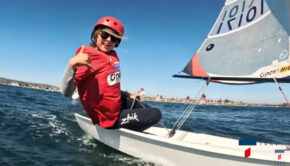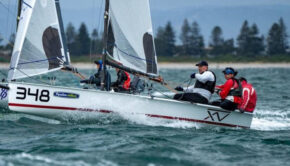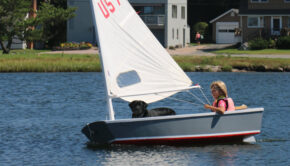The Liminality of Sailing
Published on June 16th, 2019
John Thorp has a Ph.D. from the University of Chicago in cultural anthropology, and provides this report for anyone who has an interest in having fun.
I have been studying human behavior as a cultural anthropologist for more than five decades. I have been sailing even longer.
During my teaching career, I developed an introductory anthropology course on myth and ritual. I didn’t just talk about these topics but taught my students to create meaningful myths for navigating their particular life situation (being away from home for the first time) and rituals which allowed them to coalesce as small communities within the larger campus community.
This was where I first realized the power of liminal experiences.
For me racing sailboats was the way to be on the water, in the boat most of the time, with the wind and chop. Sailing has always been about being “in the moment.” In anthropologist speak, every time I’m on the water is a liminal experience. It’s about having fun! Kids (and adults) need to splash more water.
In 1909 Arnold van Gennep published Les rites de passage*. He recognized that human beings share a universal desire to be totally “in the moment,” present to themselves and each other. His central contribution to understanding of human behavior was his explanation of how humans structure ritual behavior to experience this presence, what he calls liminality.
What van Gennep realized was rituals are divided into three stages: separation-from-the- ordinary, liminality, and reaggregation-to-the-ordinary. Liminality is a state of being betwixt and between (like standing in a doorway) the ongoing daily demands of staying alive and staying related to those immediately around us.
To be “in the moment” a person has to separate from ordinary day-to-day affairs, whether they are worries or happiness. Rites of separation are structured to move the person into the central stage of the ritual, the liminal state of the present moment. Among other things, rites of separation usually involve putting on special clothes or decoration. Prepping a sailboat certainly is different from our ordinary lives.
For some, probably for most, ritual was/is the realm of the sacred. From the point of view of the observing anthropologist, what happens in the liminal state has more to do with how the participants relate to each other than to any kind of divinity or the supernatural.
For at least the duration of the liminal stage, if it is effective, the participants can be at one with each other. Crews that work together win races. Kids in a boat have fun with each other.
As the hippies of the 60’s found out in creating their communes, however, you can’t stay in this liminal state. So rituals also have rites of reaggregation by means of which the participants return to the helter-skelter realities of surviving through time with each other, hopefully better at it because of the ritual.
Protocol for Championship Prize Giving outlines an important reaggregation ritual. You can’t just walk away from a week(end) on the water like nothing special happened.
* Van Gennep, Arnold (1960) The Rites of Passage. Chicago: University of Chicago Press
Author: John Thorp started sailing in the pre-Sunfish era on a home built plywood shell with sail. Much later in life he moved on to a JY 15 and now has an Interlake. He’s also raced as crew on Lightnings and Flying Scots. His sailing grounds are Hamlin Lake in Ludington, MI.









 We’ll keep your information safe.
We’ll keep your information safe.